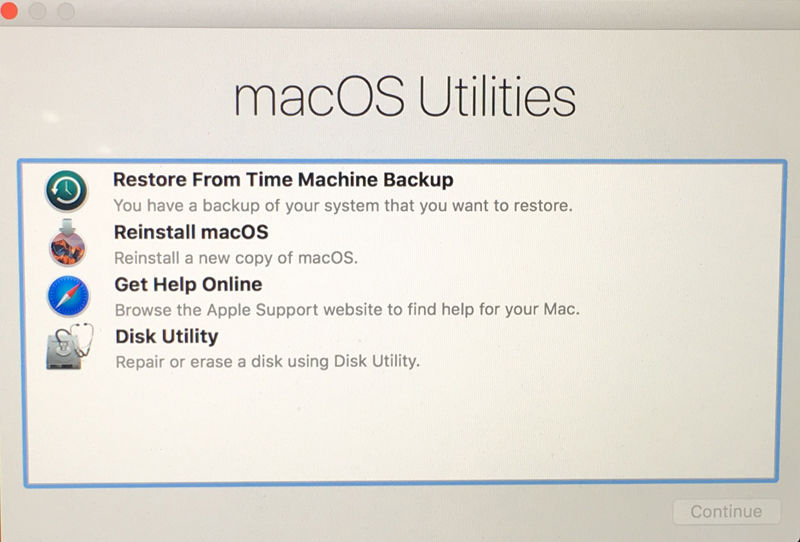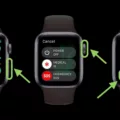Are you a Windows user but now have a Mac Mini? Do you want to factory reset it but don’t know how? If so, this post is for you!
The Mac Mini is a great device and an excellent choice for users who are looking for a powerful machine that won’t take up too much space. Unfortunately, the process of resetting the Mac Mini with a Windows keyboard is not as simple as it would be with an Apple keyboard.
First, it’s important to note that the Windows key on your Windows keyboard is equivalent to the Command key on the Mac keyboard. To restart your Mac in Recovery Mode, hold down the Windows key + R key combination while your Mac is starting up. This will bring up options in the macOS Utilities window.
Once in Recovery Mode, there are two ways to reset a Mac Mini: using the Erase All Content and Settings option or erasing disk data in Disk Utility and reinstalling macOS.
If you choose to use the Erase All Content and Settings option, click on it and follow the prompts to erase all data from your Mac Mini. This will delete everything stored on your machine, including any personal files or settings.
If instead you choose to erase disk data in Disk Utility and reinstall macOS, open Disk Utility by clicking on it from the macOS Utilities window. Select Macintosh HD from the list of disks and then click “Erase” at the top of the window. Once complete, select “Reinstall macOS” from the macOS Utilities window and follow the prompts to reinstall your operating system.
After either method is complete, your Mac Mini will be reset back to its original state with no personal information remaining. It may take some time for this process depending on how much data was stored on your machine before beginning to reset it.
Resetting a Mac Mini with a Windows keyboard isn’t always easy but following these steps should make it easier for anyone who has one of these devices but doesn’t have an Apple keyboard handy!

Factory Resetting Mac Mini Without Password Using Windows Keyboard
The best way to factory reset your Mac Mini without a password using a Windows keyboard is to enter the Recovery Mode. To do this, press and hold Command + R upon startup. You will be taken to the macOS Utilities menu. Select the “Disk Utility” option from this menu and click “Continue”. Choose the main hard drive from the list of drives and select “Erase” from the toolbar at the top of the window. Choose “Mac OS Extended (Journaled)” as your format, give your disk a name, and click “Erase”. Once you have successfully erased your disk data, exit Disk Utility and select Reinstall macOS in the utility window. Follow the on-screen prompts to reinstall macOS onto your device. Once this process is complete, you will have successfully reset your Mac Mini without a password.
Booting Mac Mini into Recovery Mode Using a Windows Keyboard
If you’re using a Windows keyboard to boot your Mac mini into Recovery Mode, the first step is to restart your Mac. Once the computer has restarted, you’ll need to press and hold down the Windows key + R key combination on your keyboard. This will boot your Mac mini into Recovery Mode, where you can access a range of tools and options for troubleshooting and repairing your Mac.
Forcing a Mac Mini to Factory Reset
To force your Mac Mini to factory reset, you’ll need to begin by shutting down the Mac. Then press and hold the power button and Command + R keys on your keyboard at the same time. This will open up a screen with various options; select Disk Utility and wait for it to load. Once it has loaded, locate the disk named Macintosh HD and erase it. After erasing the disk, return to the recovery options menu and select “Reinstall macOS” or “Install macOS from the internet” depending on your version of macOS. Follow the instructions given onscreen in order to complete the factory reset process.
Factory Resetting a Mac Mini Without Logging In
To factory reset your Mac Mini without logging in, you’ll need to enter the Recovery Mode. To do this, restart your Mac Mini and hold down the Command (?) + R keys while it boots up. Keep holding until you see the Apple logo or a spinning globe.
Once in Recovery Mode, select Disk Utility to erase all data on your Mac Mini. Select the hard drive that is associated with the Mac Mini from the list of available drives. Once selected, click on Erase at the top of the window and choose Mac OS Extended (Journaled) as the format type. Enter a name for your hard drive and click Erase to continue. After that process is complete, exit Disk Utility and select Reinstall macOS from the utility menu. Follow the on-screen instructions to reinstall a clean version of macOS onto your Mac Mini.
Using a Windows Keyboard to Reset a Mac
Yes, you can reset a Mac with a Windows keyboard by simultaneously pressing and holding the Windows key + R key on the Windows keyboard and pressing and holding the Power button on your Mac Mini until the MacOS utility dialog appears. Once the dialog appears, you can let go of the keys and power button, then use the Disk Utility option from the MacOS utilities to erase (e.g., format) your disk.
Performing a Hard Reset on a Mac Using Keyboard Shortcuts
To hard reset your Mac, press and hold down the Command (?) and Control (Ctrl) keys along with the power button (or the ? Touch ID? / Eject button, depending on the Mac model). Hold these keys down until the screen goes blank and the machine restarts. This will perform a hard reset of your Mac and should resolve most issues you’re having.
Factory Resetting a Mac Using Command Prompt
To factory reset your Mac using Command Prompt, you will need to restart your Mac and then hold down the Command. + R keys as it begins to restart. This will bring up the macOS Utilities window. From here, select Utilities and then Terminal. In the Terminal window, type: xartutil –erase-all and press Return. This command will erase all of your data from the hard drive of your Mac and reset it back to its factory settings. Once complete, you can proceed with setting up your Mac as if it were brand new.
Resetting a Mac to Factory Settings Without a Mouse
To reset your Mac to factory settings without a mouse, start by restarting your Mac and holding down the Command (?) and R keys on your keyboard until the Apple logo appears on the screen. This will launch the macOS Recovery system. From here, you can select Disk Utility from the utility menu in the top bar. Use the up-arrow key to highlight the e.g. Macintosh HD, or whichever volume you want to erase. Use the tab key multiple times until the Erase button on the toolbar is highlighted. Press the space key to actuate this highlighted Erase button and then select “Mac OS Extended (Journaled)” from the Format menu. Choose Erase from this menu, and then click Done when it has finished erasing your hard drive. Finally, select Reinstall macOS from the utility menu in macOS Recovery and follow any additional instructions given by your Mac to finish resetting it to its factory settings.
Troubleshooting Mac Recovery Mode Issues
It’s possible that your Mac won’t go into Recovery Mode for a variety of reasons. The most common cause is that you’re running an older version of the Mac operating system, such as Snow Leopard or earlier, which does not have a Recovery Partition. Other possible causes include a damaged or defective keyboard, a corrupt operating system, and incompatible firmware. If none of these solutions work, then it may be necessary to reset your Mac’s SMC (System Management Controller), which can help to reset the computer’s startup settings. Additionally, you can try booting into Safe Mode in order to determine the source of the issue.
How to Factory Reset Your Mac
To factory reset your Mac, you need to follow these steps:
1. From the Apple menu? in the corner of your screen, choose System Preferences.
2. Click General in the sidebar.
3. Click Transfer or Reset on the right.
4. Click Erase All Content and Settings.
5. Enter your Mac’s password if prompted, then click Erase Now to confirm the reset process.
6. Your Mac will restart and take several minutes to complete the reset process, during which time you may see a progress bar on your screen.
7. When finished, you will be asked to set up your Mac as if it were new with options for setting up from a Time Machine backup or transferring information from another Mac or PC using Migration Assistant.








